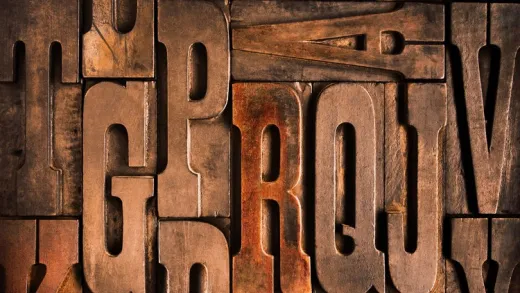Brief Summary
This course is all about mastering typography in graphic design—it's like your go-to guide for selecting fonts, avoiding mistakes, and presenting professional work. You'll learn through videos, quizzes, and practical tips to make your designs stand out.
Key Points
-
Learn how to use typography effectively in graphic design.
-
Understand the basic elements like kerning, tracking, and leading.
-
Develop skills to choose the right typefaces for different projects.
-
Engage in quizzes to check your understanding.
-
Get recommendations for further learning and resources.
Learning Outcomes
-
Know the basics of type shapes and categories.
-
Confidently choose and combine typefaces.
-
Avoid common typography mistakes.
-
Master important elements of typography for clean design.
-
Stay updated with recommended resources and current trends.
About This Course
Learn how to use type properly and effectively. Avoid common mistakes. Obtain professional results in graphic design
Course Summary
Typography is present in every graphic design project, whether it be print or digital, motion or brand identity. This course explains how to use type properly in order to obtain professional results. The course directly addresses development of the skills a graphic designer must master for real world projects.
The use of video, voiceover, images and motion help to create a smooth and efficient learning experience with lasting results.
The course It’s structured in the following way:
1. Tools:
Develop a basic knowledge of the shape, proportions, and historical heritage of the letterforms that permit the graphic designer to classify typefaces into categories.
2. Methodology:
Once basic knowledge is required and common language is established, a method that can be applied to any graphic design project is presented. This method will enable the student to choose the right typefaces for each project with confidence.
3. Obtaining Visible Professional Results:
There are many specific elements of typography that a professional graphic designer must master in order to deliver the desired result in a clean and effective manner.
The following concepts are explained:
· Kerning, tracking, leading, alignment and spacing
· A collection of Dos and Don’ts as well as Quick Tips that will come in handy in every project is presented
4. Verification
The use of quizzes at the end of each lesson will allow the student to gauge their understanding of the most important concepts.
5. Keep learning!
Recommended books and online resources are presented for the purpose of ongoing learning as well as staying updated about current typography trends.
As stated above, this course is less about the history of typography and is father strictly relevant for people who want to develop skills and learn the tools needed for typography now.





Waqar A.
I found "The Fundamentals of Typography" to be very well explained and easy to understand. The concepts were clear and accessible, making it a great resource for both beginners and those looking to refresh their knowledge.
To enhance the content further, I suggest adding a section on industry-specific font usage. Different industries often favor particular typefaces that align with their branding and audience. For example:
Tech Industry: Often uses clean, modern sans-serif fonts like Helvetica or Roboto for a sleek, contemporary look.
Fashion Industry: Tends to favor elegant serif fonts like Didot or Bodoni that convey sophistication and style.
Food & Beverage: Playful or handwritten fonts, like Pacifico or Lobster, can evoke a friendly, casual vibe.
Finance & Law: Generally uses traditional serif fonts like Times New Roman or Garamond, which convey trust and stability.
Including this information would provide practical insights for readers, helping them make informed font choices based on the specific needs of their industry.
Overall, great job on the typography fundamentals! With these additions, it could be even more valuable for professionals looking to enhance their design skills.